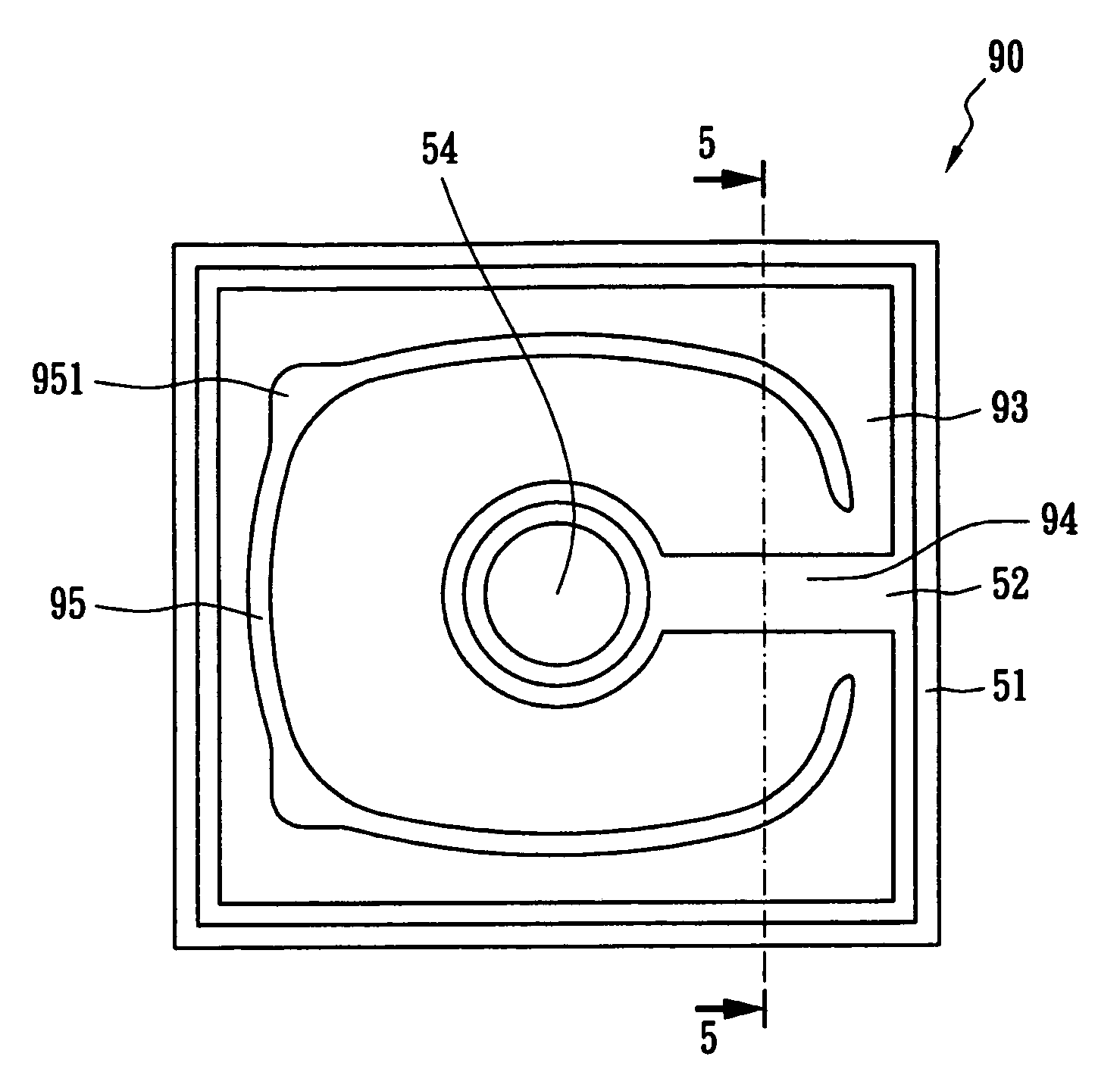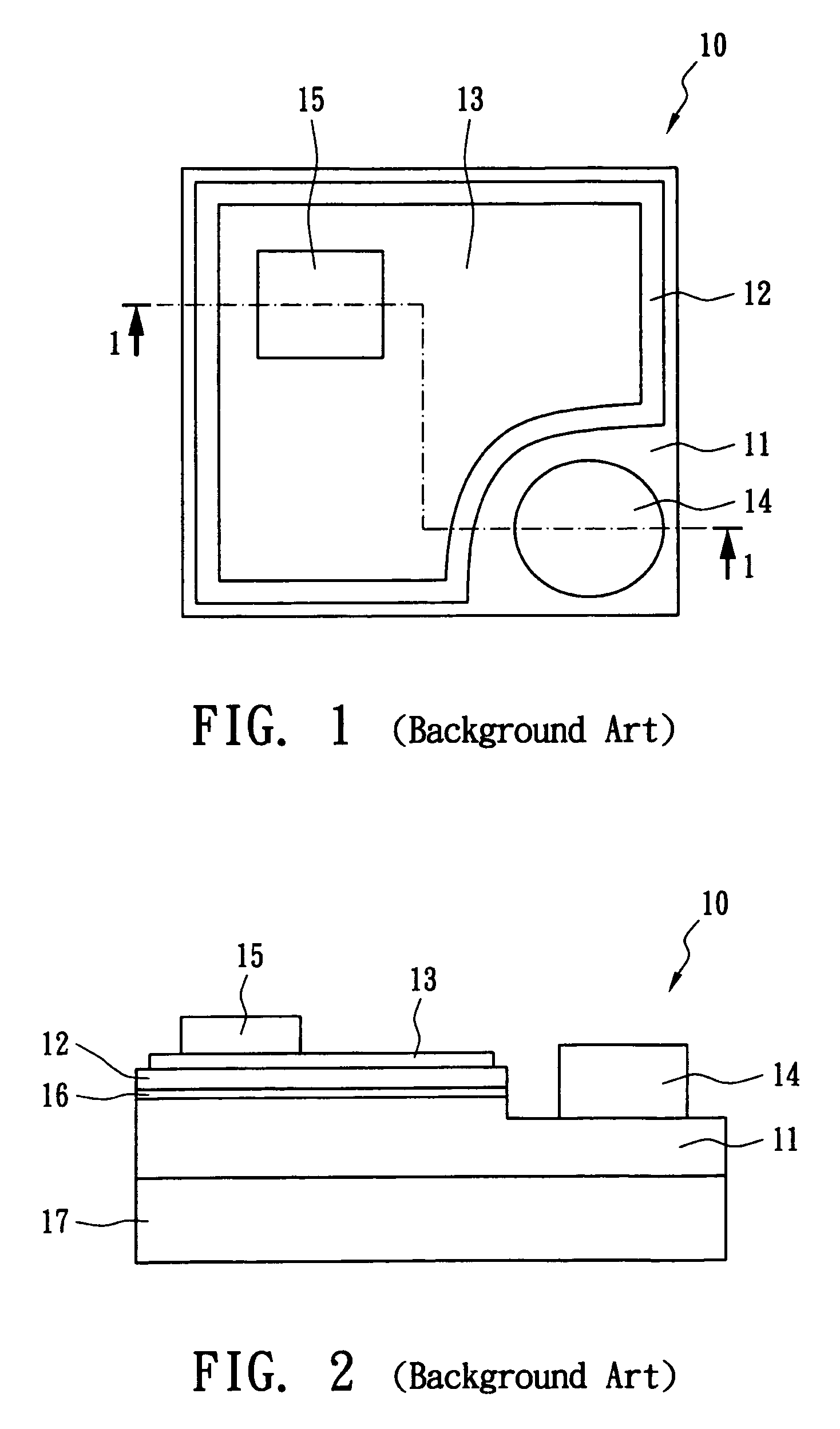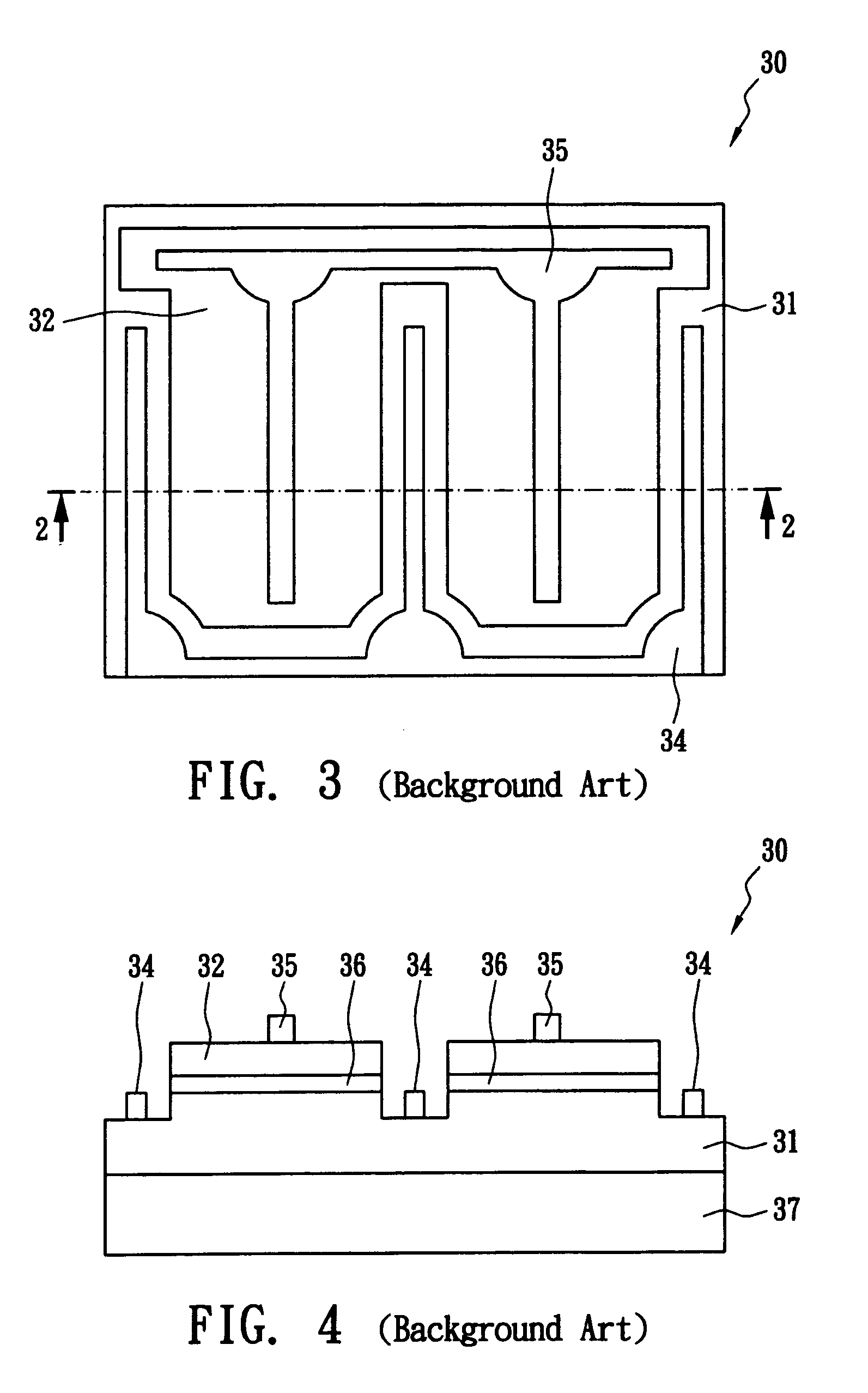High power light emitting diode
a light-emitting diode, high-power technology, applied in the direction of basic electric elements, electrical apparatus, semiconductor devices, etc., can solve the problems of high power consumption, abnormal discharge of electrostatic charges, and burning of partial circuits, so as to improve the illumination efficiency of an active layer, improve the efficiency of heat dissipation, and high power
- Summary
- Abstract
- Description
- Claims
- Application Information
AI Technical Summary
Benefits of technology
Problems solved by technology
Method used
Image
Examples
Embodiment Construction
[0036]FIG. 5 and FIG. 6 are respectively the top view and cross-sectional view of a conventional LED 10, wherein FIG. 6 is along line 4-4 in FIG. 5. A high power LED 50 comprises a substrate 57. An N-type semiconductor layer 51, an active layer 56, a P-type semiconductor layer 52 and a transparent conductive layer 53 are sequentially deposited on the substrate 57. A semi-insulator layer 58 or a non-N-type semiconductor layer can be interposed between the N-type semiconductor layer 51 and substrate 57. A N-type electrode 54 with a centralized shape is connected to the under N-type semiconductor layer 51 through an opening 59. The N-type electrode with a centralized pattern is formed on the middle of the LED. As shown in FIG. 1, the round-shaped N-type electrode 54 is placed on the middle of the LED 50. A P-type electrode 55 coupled to the P-type semiconductor layer 52 is arranged like a closed ring or an open ring surrounding the N-type electrode 54, and is stacked on the transparent...
PUM
 Login to View More
Login to View More Abstract
Description
Claims
Application Information
 Login to View More
Login to View More - R&D
- Intellectual Property
- Life Sciences
- Materials
- Tech Scout
- Unparalleled Data Quality
- Higher Quality Content
- 60% Fewer Hallucinations
Browse by: Latest US Patents, China's latest patents, Technical Efficacy Thesaurus, Application Domain, Technology Topic, Popular Technical Reports.
© 2025 PatSnap. All rights reserved.Legal|Privacy policy|Modern Slavery Act Transparency Statement|Sitemap|About US| Contact US: help@patsnap.com



